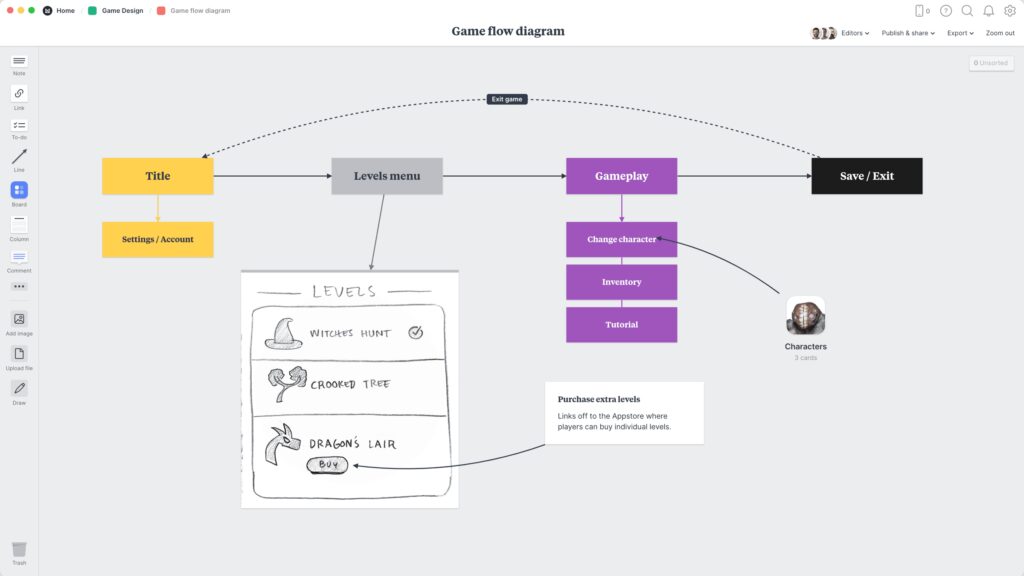Game development involves various stages and tasks, with game mechanics, level design, and UI design being crucial elements. Game mechanics refer to the rules and systems that govern a game’s gameplay, level design is the creation of levels that are fun, challenging, and visually appealing, while UI design is the creation of the game’s user interface. Developers draw inspiration from other games, real-life experiences, and game design theory when developing game mechanics. Level designers consider factors like game mechanics, player abilities, and the game’s overall theme when creating game levels, while UI designers must design interfaces with readability, usability, and visual appeal in mind.
Behind the Scenes of Game Development: Exploring Mechanics, Levels, and UI Design
Game development is a complex process that involves a variety of tasks and stages. Behind every successful game, there is a team of developers who work tirelessly to bring their creative vision to life. In this article, we will explore the different elements of game development, including mechanics, levels, and UI design.
Game Mechanics
Game mechanics refer to the rules and systems that govern a game’s gameplay. They are the backbone of any game and determine how players interact with the game world. Game mechanics can range from simple ones like jumping and shooting to more complex ones like crafting and resource management.
When developing game mechanics, developers often draw inspiration from other games, real-life experiences, and game design theory. They create prototypes and test them with focus groups to ensure that the mechanics are engaging and enjoyable.
Examples of Game Mechanics
Some common game mechanics include:
– Platformer mechanics, where players jump and run through levels
– Stealth mechanics, where players must avoid enemies and remain undetected
– Puzzle mechanics, where players must solve puzzles to progress through the game
– RPG mechanics, where players customize their characters and level them up
– Resource management mechanics, where players must manage resources like food, water, and materials
– Crafting mechanics, where players gather materials and use them to create new items
Level Design
Level design is the process of creating game levels that are fun, challenging, and visually appealing. Level designers must consider a variety of factors when designing levels, including the game mechanics, the player’s abilities, and the game’s overall theme.
Level designers often start with a rough sketch of the level and use 3D modeling software to create a detailed version of it. They then test the level with focus groups to ensure that it is enjoyable and challenging.
Examples of Level Design
Some common level design elements include:
– Obstacles, such as pits, spikes, and enemies
– Secret areas, where players can find hidden items and rewards
– Boss fights, where players must defeat a powerful enemy to progress
– Multiple paths, where players can choose different routes through the level
– Puzzle elements, where players must solve puzzles to progress
UI Design
UI design refers to the process of creating the game’s user interface. This includes menus, HUD, and other elements that allow players to interact with the game. UI designers must consider factors like readability, usability, and visual appeal when designing interfaces.
UI designers often work closely with the game’s art team to ensure that the interface’s design matches the game’s overall aesthetic.
Examples of UI Design
Some common UI elements include:
– Menus, where players can access different game options and settings
– HUD, which displays important information like health, ammo, and objectives
– Map screens, where players can view the game world and their progress
– Inventory screens, where players can view and manage their items and equipment
In Conclusion
Game development is a complex process that involves many elements, including game mechanics, level design, and UI design. Each element is crucial for creating a successful and engaging game. Developers must work together and test their ideas to ensure that their game is enjoyable, challenging, and visually appealing. As players, we get to enjoy the fruits of their labor, whether we are jumping through levels or managing resources in a survival game.
